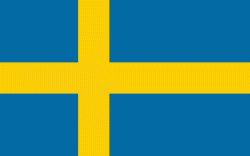Uppsala University (Uppsala University)
Uppsala University (Uppsala universitet) is a public research university in Uppsala, Sweden. Founded in 1477, it is the oldest university in Sweden and the Nordic countries still in operation.
The university rose to significance during the rise of Sweden as a great power at the end of the 16th century and was then given relative financial stability with a large donation from King Gustavus Adolphus in the early 17th century. Uppsala also has an important historical place in Swedish national culture, and identity and for the Swedish establishment: in historiography, literature, politics, and music. Many aspects of Swedish academic culture in general, such as the white student cap, originated in Uppsala. It shares some peculiarities, such as the student nation system, with Lund University and the University of Helsinki.
Uppsala belongs to the Coimbra Group of European universities and to the Guild of European Research-Intensive Universities. It has ranked among the world's 100 best universities in several international rankings.
The university has nine faculties distributed over three disciplinary domains: Humanities and Social Sciences, Medicine and Pharmacy, and Science and Technology. , it had approximately 52,000 registered students at the undergraduate and postgraduate levels and 2,200 PhD students.
Architecturally, Uppsala University has traditionally had a strong presence in Fjärdingen, the neighbourhood around the cathedral on the western side of the river Fyris. Despite some contemporary building developments further away from the centre, Uppsala's historic centre continues to be dominated by the presence of the university.
The university rose to significance during the rise of Sweden as a great power at the end of the 16th century and was then given relative financial stability with a large donation from King Gustavus Adolphus in the early 17th century. Uppsala also has an important historical place in Swedish national culture, and identity and for the Swedish establishment: in historiography, literature, politics, and music. Many aspects of Swedish academic culture in general, such as the white student cap, originated in Uppsala. It shares some peculiarities, such as the student nation system, with Lund University and the University of Helsinki.
Uppsala belongs to the Coimbra Group of European universities and to the Guild of European Research-Intensive Universities. It has ranked among the world's 100 best universities in several international rankings.
The university has nine faculties distributed over three disciplinary domains: Humanities and Social Sciences, Medicine and Pharmacy, and Science and Technology. , it had approximately 52,000 registered students at the undergraduate and postgraduate levels and 2,200 PhD students.
Architecturally, Uppsala University has traditionally had a strong presence in Fjärdingen, the neighbourhood around the cathedral on the western side of the river Fyris. Despite some contemporary building developments further away from the centre, Uppsala's historic centre continues to be dominated by the presence of the university.
Map - Uppsala University (Uppsala University)
Map
Country - Sweden
 |
 |
| Flag of Sweden | |
Nature in Sweden is dominated by forests and many lakes, including some of the largest in Europe. Many long rivers run from the Scandes range through the landscape, primarily emptying into the northern tributaries of the Baltic Sea. It has an extensive coastline and most of the population lives near a major body of water. With the country ranging from 55°N to 69°N, the climate of Sweden is diverse due to the length of the country. The usual conditions are mild for the latitudes with a maritime south, continental centre and subarctic north. Snow cover is infrequent in the densely populated south, but reliable in higher latitudes. Furthermore, the rain shadow of the Scandes results in quite dry winters and sunny summers in much of the country.
Currency / Language
| ISO | Currency | Symbol | Significant figures |
|---|---|---|---|
| SEK | Swedish krona | kr | 2 |
| ISO | Language |
|---|---|
| FI | Finnish language |
| SE | Northern Sami |
| SV | Swedish language |















